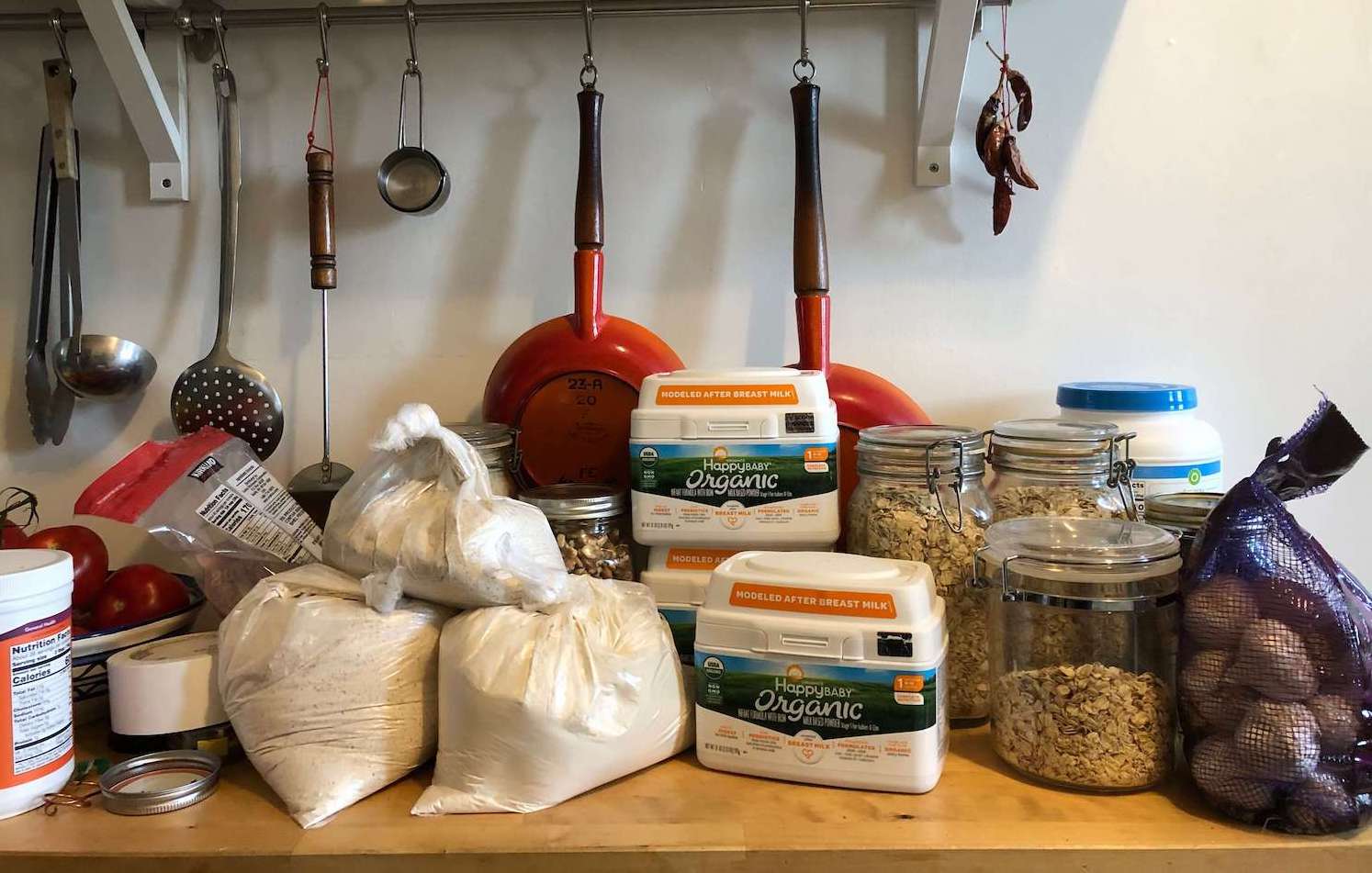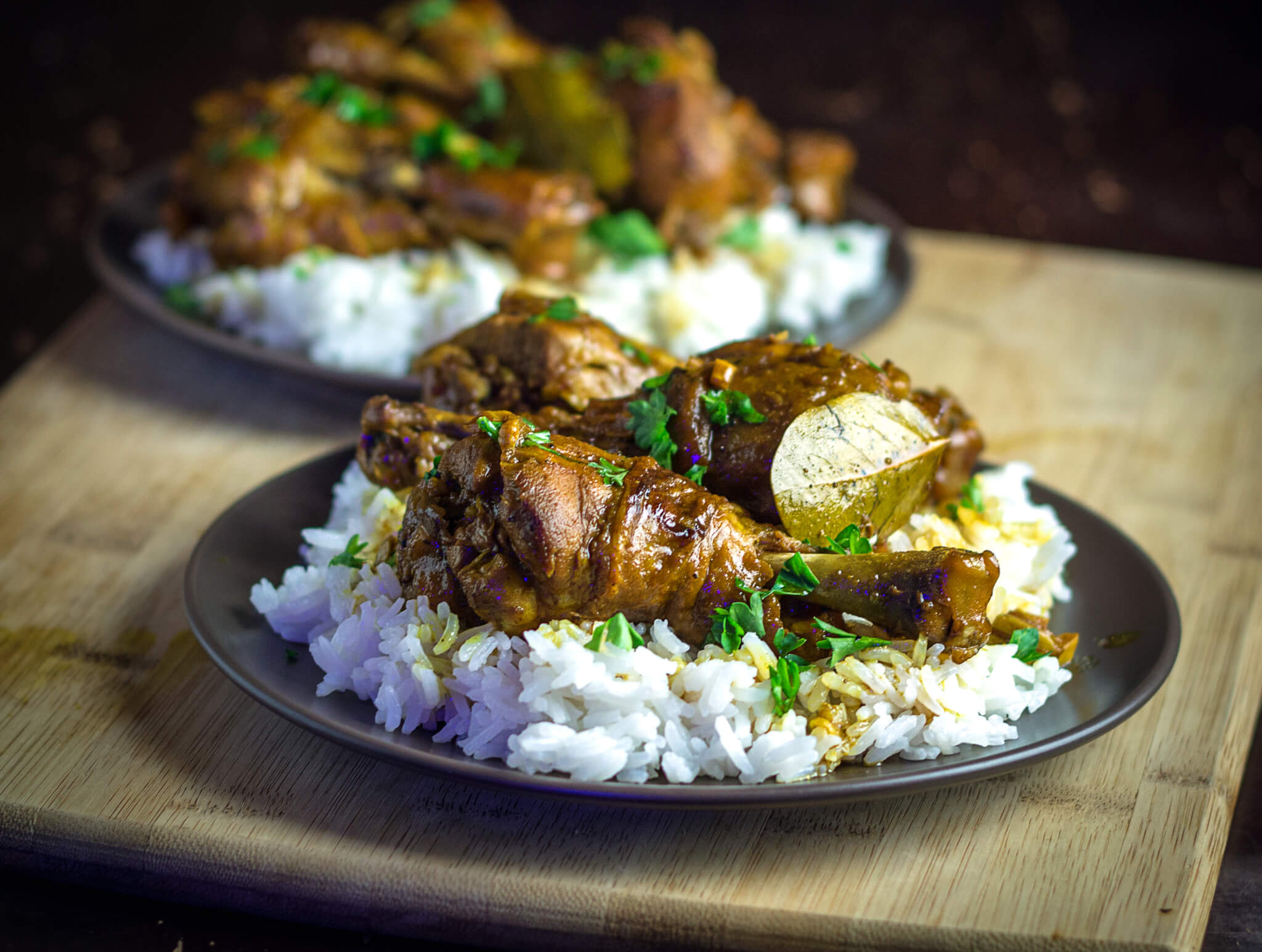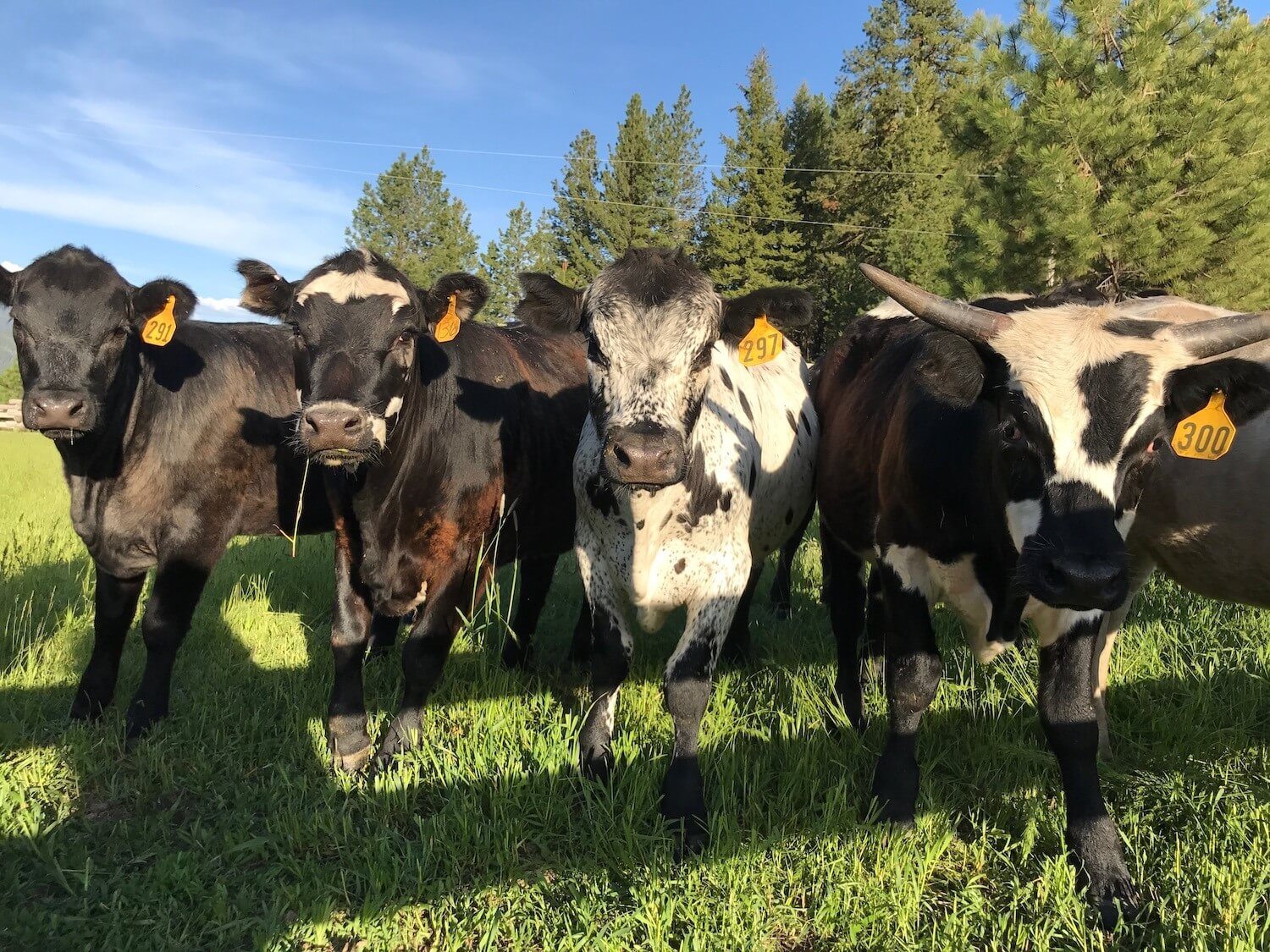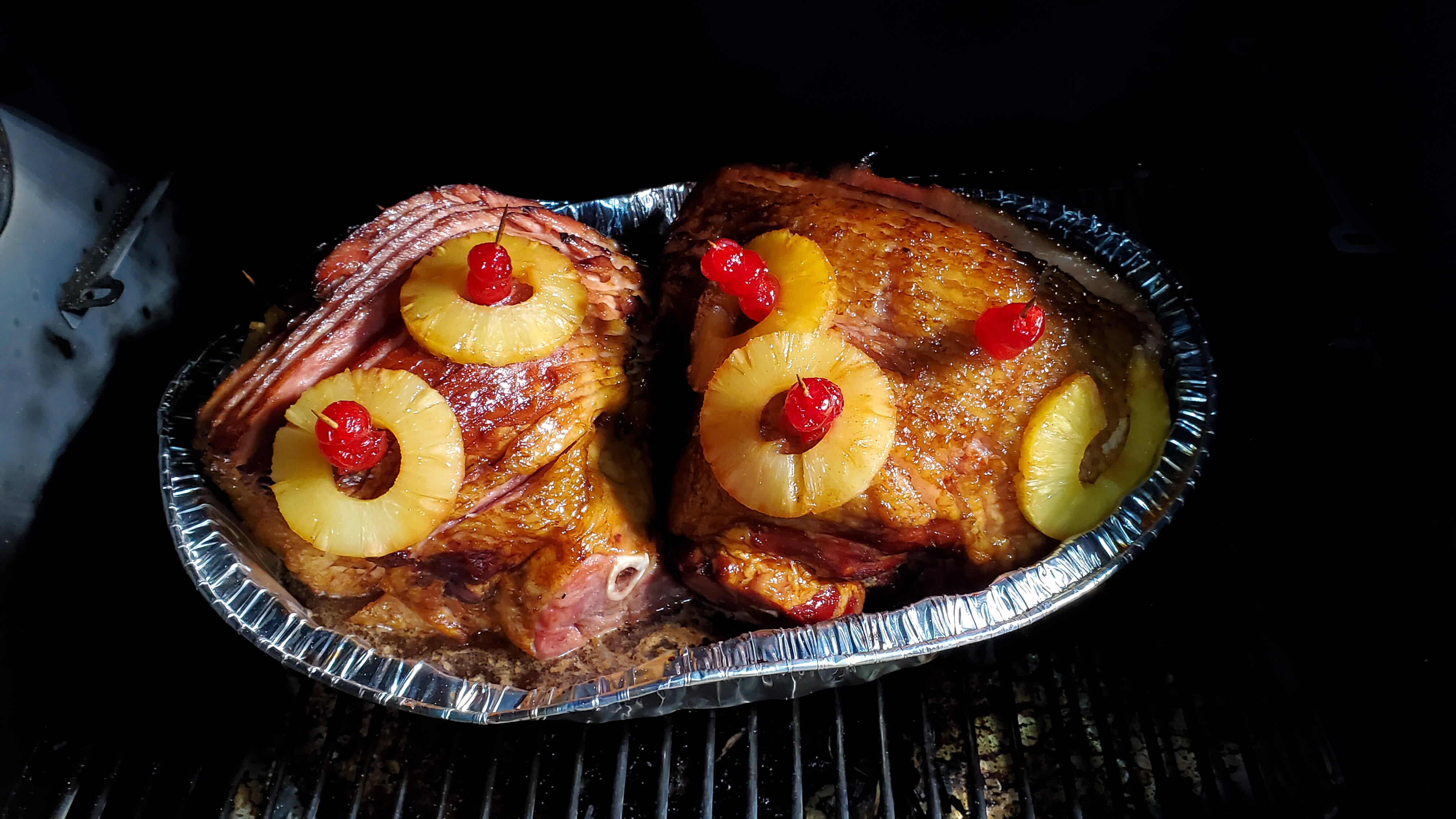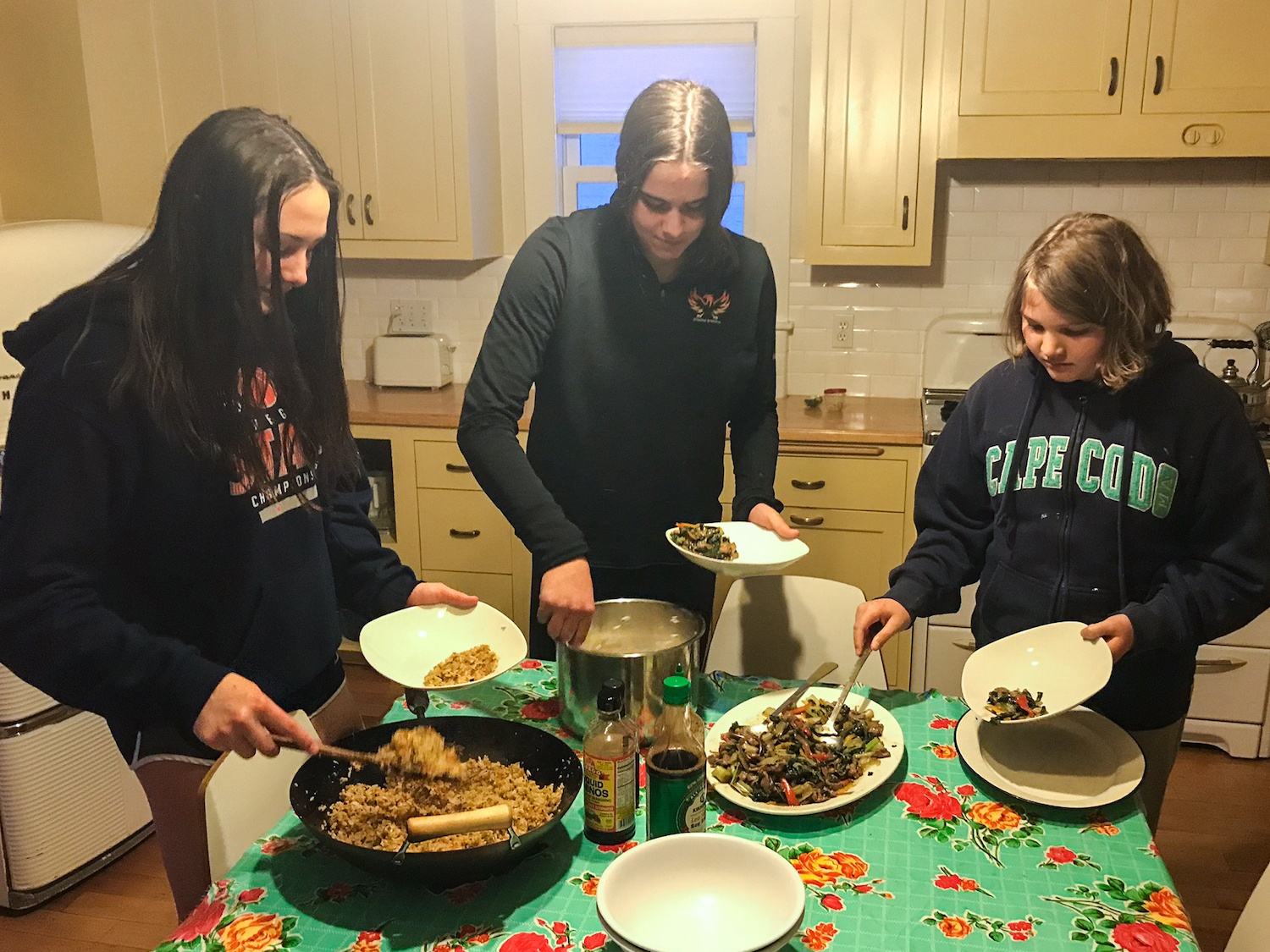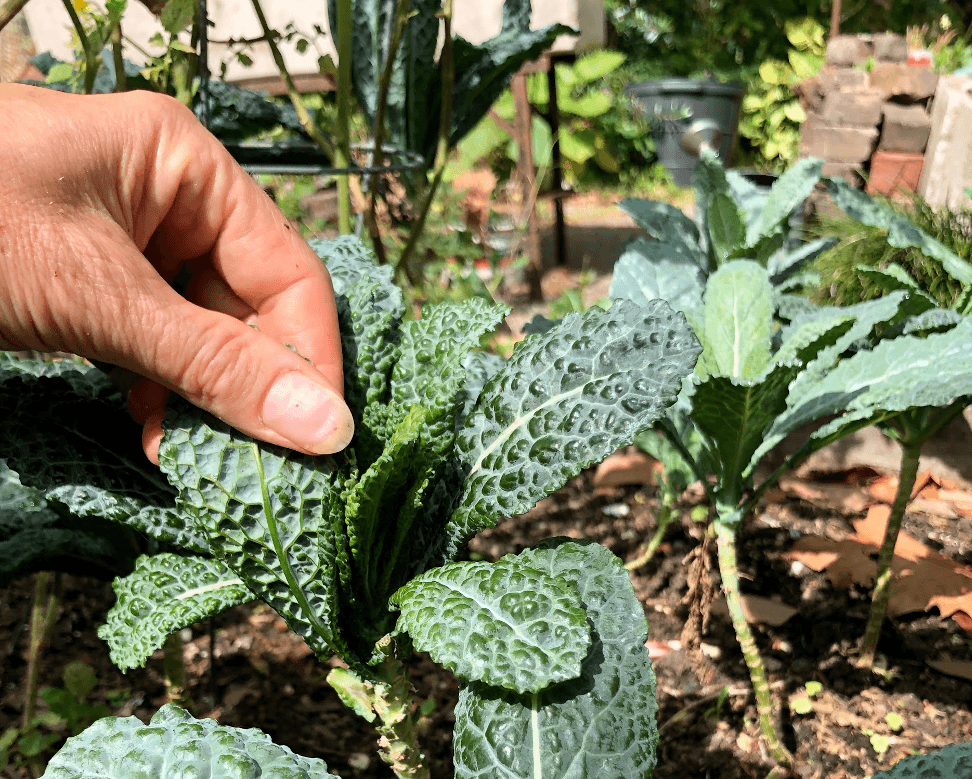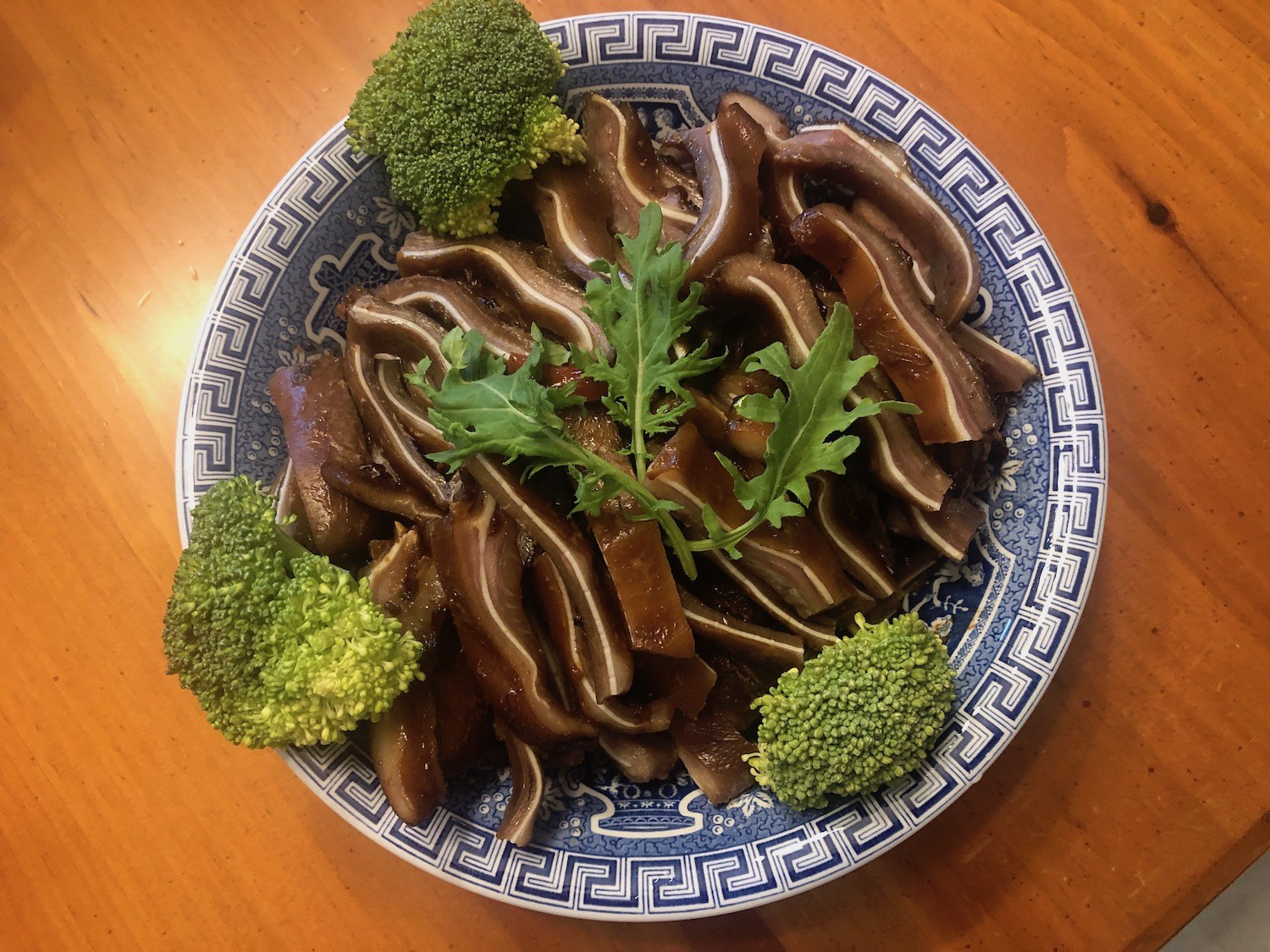
Amber Gibson
“Lots of collagen,” my mom would always say, setting a glistening bowl of pork trotters in front of me. “Very good for you.”
Above: a dish of braised pig ears, as prepared by the author
A decade later, I find myself turning to pork trotters, pig ears, and beef tendon, though for reasons I wouldn’t have expected. What began as a desperate teenage attempt to ward off breakouts has become a comforting, nostalgic, and affordable meal at a time when grocery prices are spiking more sharply than they have in 40 years and we’re warned of imminent meat shortages.
Costco is limiting members to three fresh meat items per person amid concerns of a nationwide meat shortage due to slaughterhouse and meat processing plant closures. Grocery stores like Kroger have followed suit. Meanwhile, cuts of offal are readily available at Asian and Latin supermarkets—and they’re much more affordable than premium cuts like pork chops and steaks. Pork tail, feet, and ears are consistently less than pork chops. Beef tendon and heel meat are less than half the price of steak.
Admittedly, these cuts may be a little more of a hassle to prepare—you have to pluck individuals hairs out of pork feet, skin and tail. With that done, though, they’re easy to cook. I use the same red braising technique for all types of offal: You slow-cook the meat over the course of two hours with ginger, green onion, Sichuan peppercorn, and cooking wine. This method makes the meat tender and flavorful, while the soy sauce and caramelized sugar provide the signature red color.
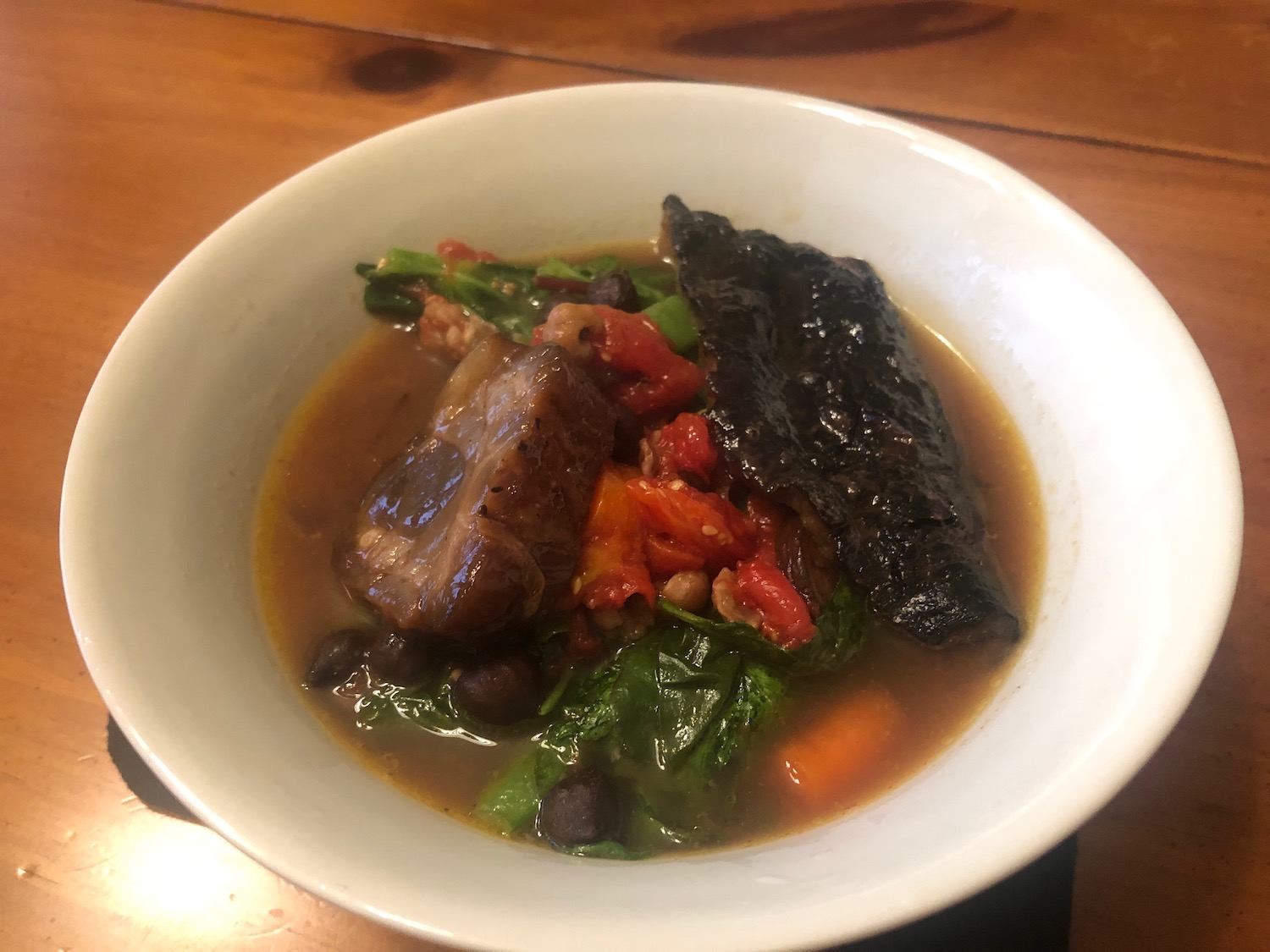
“What began as a desperate teenage attempt to ward off breakouts has become a comforting, nostalgic, and affordable meal at a time when grocery prices are spiking.”
Left, a bowl of braised beef tendon and sea cucumber prepared by the author
Amber Gibson
It’s ironic that these collagen-rich animal parts originally appealed to me for beauty purposes. These days, on the rare occasion that I venture outside, my mask and wide-rimmed sunglasses obscure all but a few square inches of my face. And it seems superficial to think of eating these foods for skincare purposes at a time when simply finding fresh food to eat has become a challenge for so many Americans.
It does feel good though, to find this loophole: an affordable path to healthy eating that’s hidden in plain sight, a real food alternative to collagen gummies and powders. Perhaps it’s the placebo effect, or the fact that I haven’t worn any makeup in more than two months, but I swear my skin has never looked better. I haven’t had a chance to get my monthly facial, and I don’t even mind.
Now, at a time when blame has been cast on China for causing this pandemic, I’m embracing my Chinese-American heritage more than ever—turning to traditional Chinese cooking methods to nourish my body and bring back memories of cooking with my mom and dining with my grandparents in Taiwan.
